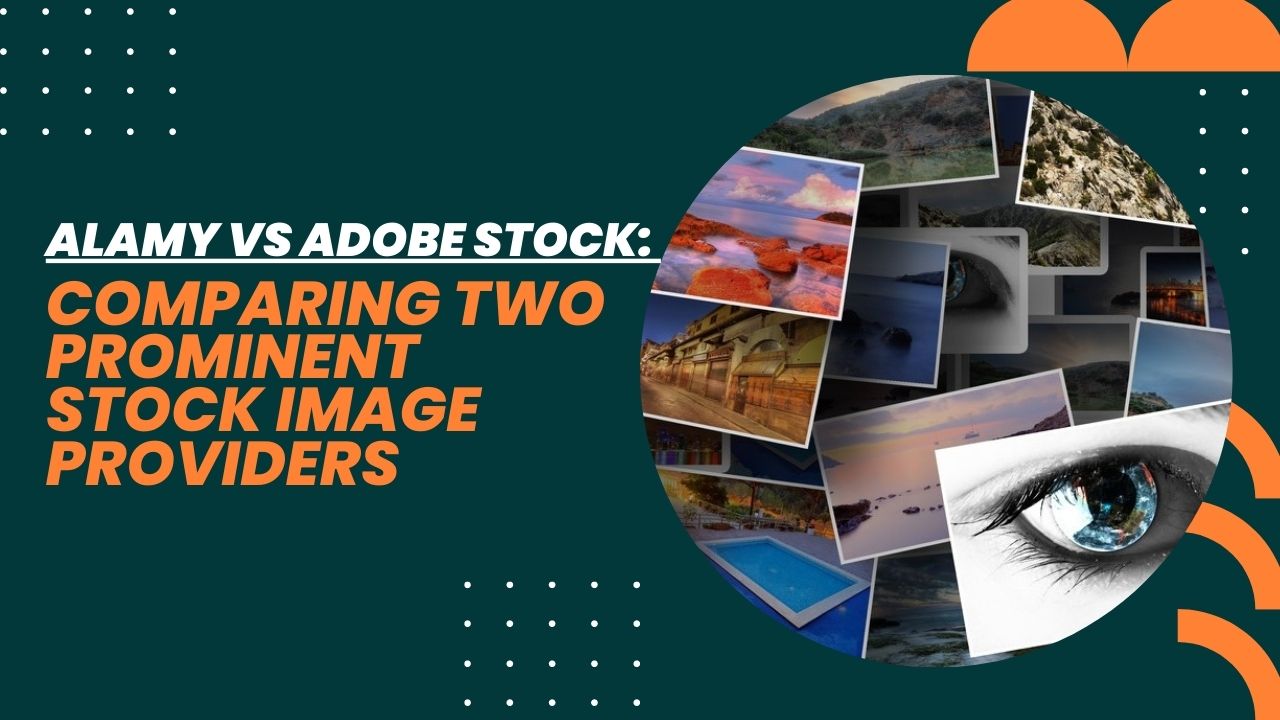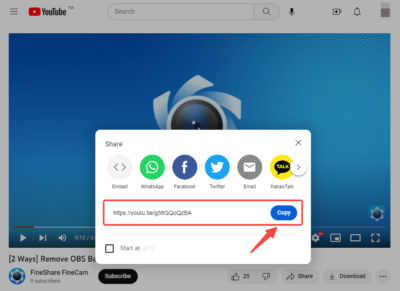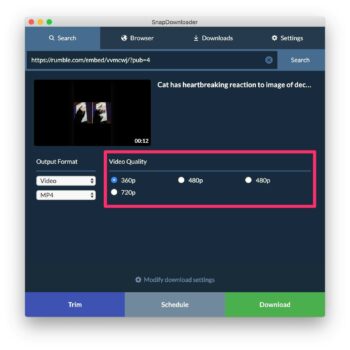1. Introduction
Stock image providers play a vital role in the creative industry, offering a vast array of high-quality images for various purposes. Alamy and Adobe Stock are two prominent platforms that photographers and image buyers often turn to.
In this blog post, we will compare these two platforms, examining their features, market reach, image quality standards, commission rates, user experience, customer support, pricing, and licensing options. By understanding the similarities and differences between Alamy and Adobe Stock, photographers and image buyers can make informed decisions about which platform aligns best with their needs and goals. Let's dive into this comprehensive comparison of Alamy vs Adobe Stock.
Also Read This: Upload Time Travel: Checking When a File Was Uploaded on Photobucket
2. Alamy: Overview and Features

Alamy is a renowned stock image provider that has been in the industry since 1999. With a vast collection of over 230 million images, it offers a diverse range of content for creative projects. Here are some key features and aspects of Alamy:
1. Market Reach: Alamy has a global reach, catering to a wide audience of image buyers, including businesses, publishers, and creative professionals worldwide. Its extensive network ensures maximum exposure for photographers and contributors.
2. Image Licensing: Alamy provides flexible licensing options, including commercial, editorial, and personal use licenses. This allows customers to acquire the appropriate rights for their specific needs.
3. Quality Standards: Alamy maintains strict quality control, ensuring that images meet high standards before being accepted into its collection. This ensures that buyers have access to professional and visually appealing content.
4. Contributor Benefits: Alamy offers competitive commission rates to photographers and contributors, with up to 50% commission on direct sales. Contributors also retain the copyright to their images, giving them greater control over their work.
5. Advanced Search and Discovery: Alamy's search functionality allows users to find images quickly and efficiently. With robust filters and advanced search options, buyers can narrow down their search to find the perfect image.
6. Contributor Tools: Alamy provides a range of tools and resources for contributors, including an intuitive image management system, keywording tools, and analytics to track performance and sales.
Overall, Alamy is a reputable platform that offers a wide range of features and benefits for photographers and image buyers alike. Its commitment to quality, market reach, and competitive commission rates make it an attractive choice for those looking to sell or purchase stock images.
Also Read This: Here Is How to Download Facebook Stories
3. Adobe Stock: Overview and Features

Adobe Stock is a prominent stock image provider that is part of the Adobe Creative Cloud ecosystem. It offers a vast collection of high-quality images, illustrations, videos, and templates for various creative projects. Here are some key features and aspects of Adobe Stock:
1. Integration with Adobe Creative Cloud: Adobe Stock seamlessly integrates with popular Adobe Creative Cloud applications like Photoshop, Illustrator, and InDesign. This allows users to access and license images directly within their preferred design tools.
2. Market Presence: As part of the Adobe family, Adobe Stock benefits from a wide customer base, including designers, marketers, and other creative professionals. It provides exposure to a large audience of potential image buyers.
3. Diverse Content: Adobe Stock offers a diverse range of content, including photos, illustrations, vectors, videos, and templates. This wide selection caters to various creative needs and allows users to find the perfect assets for their projects.
4. Licensing Options: Adobe Stock provides flexible licensing options, including standard and extended licenses, which grant users the appropriate rights for their intended use. It also offers subscription plans that allow users to access a certain number of images per month.
5. Creative Cloud Integration: With Adobe Stock, users can easily access and manage their licensed assets within their Creative Cloud libraries. This streamlined workflow enhances productivity and makes it convenient for users to incorporate images into their designs seamlessly.
6. Contributor Opportunities: Adobe Stock provides an opportunity for photographers and artists to become contributors and earn money by submitting their work to the platform. Contributors can showcase their talent to a vast audience and receive royalties for each sale.
Overall, Adobe Stock stands out for its integration with Adobe Creative Cloud, vast content library, and seamless user experience. It is an excellent choice for users who rely heavily on Adobe's creative tools and seek a wide selection of high-quality assets for their projects.
The following video is about Adobe Stock:
Also Read This: Top 10 Linkedin Profiles to Follow in 2023
4. Comparing Alamy and Adobe Stock:
| Feature | Alamy | Adobe Stock |
|---|---|---|
| Image library size | 200 million+ | 150 million+ |
| Image quality | High | High |
| Image pricing | Pay-per-download or subscription | Pay-per-download or subscription |
| Royalties | 50% for contributors | 33% for contributors |
| Search features | Advanced search | Advanced search |
| User interface | User-friendly | User-friendly |
| Customer support | Good | Good |
| Overall value | Good | Good |
Advantages of Alamy
- Larger image library
- More unique and creative images
- Better search features
- More user-friendly interface
Advantages of Adobe Stock
- Tight integration with Adobe Creative Cloud apps
- More affordable subscription plans
- Higher royalties for contributors
Also Read This: The 5-Minute Guide to Download Content from LinkedIn With These Simple Steps
5. Image Quality and Acceptance Criteria
When it comes to image quality and acceptance criteria, both Alamy and Adobe Stock have specific guidelines to ensure the highest standards of content. Here's an overview of how they handle image quality and acceptance criteria:
1. Alamy: Alamy has a rigorous quality control process to maintain the integrity of its image collection. They review each submitted image to ensure it meets their technical and aesthetic standards. The acceptance criteria include factors like resolution, focus, composition, lighting, noise, and digital artifacts. Alamy aims to provide customers with professional-grade images that are visually appealing and technically sound.
2. Adobe Stock: Adobe Stock also maintains strict quality standards for the images it accepts. They have specific technical requirements regarding resolution, file formats, and color profiles. Adobe Stock employs both automated and manual review processes to evaluate image submissions. They check for issues like image noise, artifacts, excessive retouching, and accurate representation of colors. The goal is to provide customers with high-quality images that meet industry standards.
Both platforms have specific guidelines and resources available for contributors to understand the image quality requirements in detail. It's essential for photographers and contributors to carefully review these guidelines and ensure their images meet the specified criteria to maximize acceptance rates.
By adhering to these quality standards, photographers and contributors increase their chances of having their images accepted and showcased in the platforms' collections. This, in turn, enhances the overall image quality and ensures a positive experience for image buyers.
Also Read This: Increasing Discoverability on Alamy: Tips for Maximizing Exposure
6. Market Reach and Exposure
Market reach and exposure are crucial considerations when choosing a stock image provider like Alamy and Adobe Stock. Here's an overview of their market reach and exposure:
1. Alamy: Alamy has a significant market reach and global presence. It caters to a diverse range of customers, including businesses, publishers, designers, and creative professionals worldwide. Alamy's extensive distribution network ensures that images are accessible to a wide audience, maximizing exposure for photographers and contributors. They also have partnerships with major media organizations, increasing the potential for image licensing and sales.
2. Adobe Stock: Adobe Stock benefits from its integration with the Adobe Creative Cloud ecosystem, which includes a vast user base of designers, marketers, and creative professionals. Adobe Creative Cloud is widely used in various industries, providing exposure to a broad audience. Images available on Adobe Stock can be easily discovered and licensed directly within Adobe's design tools like Photoshop, Illustrator, and InDesign. This integration enhances the platform's market reach and exposure.
Both Alamy and Adobe Stock offer exposure to a wide customer base, but their reach may vary slightly based on their target audience and partnerships. It's important for photographers and contributors to consider their target market and the potential customers they want to reach when selecting a platform. This will help them make an informed decision about which platform aligns best with their specific audience and marketing goals.
Maximizing exposure on these platforms also involves optimizing image metadata, keywords, and using relevant tags to increase discoverability. Additionally, promoting your portfolio through social media, personal websites, and networking can further enhance your market reach and increase exposure to potential buyers.
Also Read This: Know About 9GAG Meaning and Why is it Popular
7. Pricing and Licensing Options
When it comes to pricing and licensing options, both Alamy and Adobe Stock offer flexible choices for image buyers. Here's an overview of their pricing and licensing options:
1. Alamy: Alamy provides a variety of pricing options for image licensing. They offer both Rights Managed (RM) and Royalty-Free (RF) licenses. Rights Managed licenses are priced based on factors such as image usage, duration, and exclusivity. Royalty-Free licenses have a one-time fee, allowing for broad usage rights. Alamy also offers customized pricing for specific needs and bulk licensing options for businesses. The pricing varies depending on factors like image resolution, license type, and intended use.
2. Adobe Stock: Adobe Stock offers a subscription-based pricing model as well as on-demand purchasing options. Users can subscribe to a monthly or annual plan that allows a certain number of image downloads per month. The subscription plans offer cost-effective options for users with high-volume image needs. Additionally, Adobe Stock provides the option for on-demand purchases, where users can buy images individually without a subscription. The pricing varies based on image resolution and license type.
Both platforms provide transparent pricing structures, making it easier for image buyers to choose the licensing option that suits their specific requirements and budget. The pricing may depend on factors such as image resolution, intended use, and license type (RM or RF).
It's important for image buyers to review the pricing and licensing terms of both platforms to understand the cost implications and ensure compliance with their usage needs. By offering various pricing and licensing options, both Alamy and Adobe Stock aim to accommodate a wide range of customers and provide flexibility in accessing and licensing high-quality images.
Also Read This: The Game-changing Facebook Reel Downloader You Need to Know!
8. FAQ:
Q1: What is the difference between Alamy and Adobe Stock?
ANS: Alamy and Adobe Stock are both stock image providers that offer a wide variety of high-quality images, videos, and illustrations. However, there are some key differences between the two platforms.
- Image library size: Alamy has a larger image library than Adobe Stock, with over 200 million images compared to Adobe Stock's 150 million images.
- Image pricing: Alamy offers both pay-per-download and subscription plans, while Adobe Stock only offers subscription plans.
- Royalties: Alamy pays contributors 50% of the sales price of their images, while Adobe Stock pays contributors 33% of the sales price.
- Search features: Both Alamy and Adobe Stock offer advanced search features, but Alamy's search features are generally considered to be more powerful.
- User interface: Both Alamy and Adobe Stock have user-friendly interfaces, but Alamy's interface is generally considered to be more intuitive.
- Customer support: Both Alamy and Adobe Stock offer good customer support, but Alamy's customer support is generally considered to be more responsive.
Q2: Which stock image provider is better?
ANS: The best stock image provider for you will depend on your specific needs and preferences. If you're looking for a large library of high-quality images, Alamy is a good option. If you're looking for a more affordable option or want to integrate stock images with Adobe Creative Cloud apps, Adobe Stock is a good choice.
Q3: What type of images sell best on Alamy and Adobe Stock?
ANS: The type of images that sell best on Alamy and Adobe Stock vary, but some of the most popular types of images include:
- Photos of people: Photos of people are always popular, especially photos that show people in interesting or creative ways.
- Photos of nature: Photos of nature are also popular, especially photos that capture the beauty of landscapes, animals, or plants.
- Photos of business and technology: Photos of business and technology are also popular, especially photos that show people using technology or working in a business setting.
- Photos of food and drink: Photos of food and drink are also popular, especially photos that make food look delicious.
- Photos of lifestyle and culture: Photos of lifestyle and culture are also popular, especially photos that capture the diversity of people and cultures around the world.
Q4: How do I get started selling photos on Alamy and Adobe Stock?
ANS: To get started selling photos on Alamy and Adobe Stock, you'll need to create an account and upload your photos. Alamy and Adobe Stock have different requirements for photos, so be sure to read the guidelines carefully before you upload your photos.
Once you've uploaded your photos, they will be reviewed by Alamy or Adobe Stock's team of editors. If your photos are approved, they will be added to the Alamy or Adobe Stock library and you'll start earning royalties when people download your photos.
Q5: How much can I earn selling photos on Alamy and Adobe Stock?
ANS: The amount of money you can earn selling photos on Alamy and Adobe Stock depends on a number of factors, including the type of images you sell, the number of downloads you get, and the pricing plan you choose.
In general, you can expect to earn between 20% and 50% of the sales price of your images. So, if you sell a photo for $10, you could earn between $2 and $5 in royalties.
Q6: Is it worth selling photos on Alamy and Adobe Stock?
ANS: Whether or not it's worth selling photos on Alamy and Adobe Stock depends on your individual goals. If you're looking to make a full-time income from selling photos, it may not be realistic. However, if you're looking to earn some extra money or build a portfolio of your work, selling photos on Alamy and Adobe Stock can be a great way to do it.
9. Conclusion:
In conclusion, both Alamy and Adobe Stock are prominent platforms for selling and licensing stock images, each with its own strengths and considerations. Alamy offers a vast market reach, a global presence, and a rigorous image acceptance process, ensuring high-quality content.
On the other hand, Adobe Stock benefits from its integration with the Adobe Creative Cloud ecosystem, providing exposure to a wide range of creative professionals. When choosing between the two, factors such as image quality requirements, target audience, pricing, and licensing options should be carefully considered. Ultimately, the right choice depends on individual preferences, goals, and the specific needs of photographers and image buyers.














